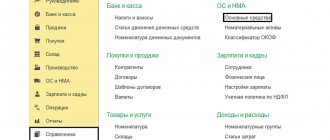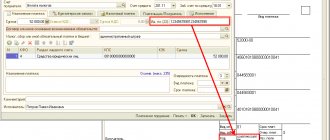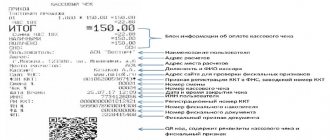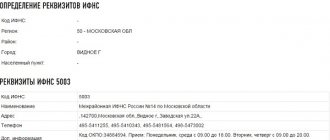The organization of accounting for any company requires strict accounting of fixed assets: the means of labor with which products, work or services are produced. One of the main mechanisms for monitoring the safety and movement of OSes is the assignment of inventory numbers to them: unique digital and symbol combinations that do not change throughout the entire operational life of the OS. When assigning an inventory number, certain techniques are used that allow you to encode in numbers and symbols all the basic information about each OS. In addition to the operating system, inventory numbers are assigned to some other objects important for the functioning of the company.
Inventory number and features of its use
An inventory number is assigned to a property at the time it is accepted for registration. After this, it acquires the status of an inventory object - a control unit. The number is applied to the object using durable paint, a barcode, engraving, using a token that cannot be quickly and discreetly removed, or in another similar way. The number must be applied so that during an inventory it can be easily and without errors identified with the BU data.
The main objects in relation to which management is organized in this way and control is exercised are:
- OS - fixed assets, objects of property of the organization that have been in operation for more than a year, are intended for production needs, and the cost of which is a legally defined amount;
- intangible objects, assets (IMA) - these include products of intellectual labor, for example, technological developments, software development, trademarks, brand names and other objects that do not have a material form, but which can in the future bring material benefits (see. Civil Code of the Russian Federation Article 1225-1, PBU 14/07);
- non-produced objects, assets - these are natural objects, subsoil, lands, water bodies, etc.
Objects costing less than 3 thousand rubles. no inventory number needed.
The following mandatory requirements apply to inventory numbers:
- they should not be duplicated;
- they must be assigned in order.
In addition, when using inventory numbers in accounting records, it is important to be guided by the following important information:
- The inventory number is applied in the presence of a commission specially created for this purpose and recorded in the inventory number journal.
- If the inventory object is a whole consisting of separate functional parts, a number is applied to each part.
- Moving an inventory item within the organization or its divisions is not a reason to change the number or adjust it. The inventory number does not change during the entire operation of the object to which it is assigned.
- If fixed assets are leased by a company, they are usually accounted for by numbers assigned by the lessor. At the same time, from Resolution 11 of the Arbitration Court of Appeal No. A55-24142/2013 dated 04/28/14, it follows that when the rights to an inventory object are transferred, for example, when signing a leasing agreement, it may be assigned a new inventory number of the organization that acquired such rights. It is argued that the assignment of inv. numbers are an internal matter of the organization.
- The inventory number of an object deregistered (sold, written off, etc.) cannot be assigned to another object in the same organization.
How to assign an inventory number
The features of this procedure are regulated by order of the Ministry of Finance of the Russian Federation dated October 13, 2003 No. 91n, approving the Methodological Instructions for accounting for fixed assets (clause 1, clause 11). A separate inventory object is assigned one number, which must be applied to the object: with paint, by attaching a metal token or by another method. The number must be clear and easily readable. If the object is intangible (for example, a licensed program) and during use it is not possible to record a number on it, then it is reflected only in the accounting documentation.
For complex objects consisting of several units with different useful lives, each part is assigned a separate number. If the complex includes single objects with the same SPI, then the entire object is listed under the same number.
The inventory number assigned to one inventory item remains unchanged throughout the entire period of stay in the company, however, as a rule, it is not transferred to another company, for example, when selling property. The company purchasing such an object assigns it an inventory number in accordance with its own numbering.
The number of a disposed object is usually not assigned to newly acquired property, withholding five years after the fact of disposal.
The law does not provide for the unification of several units under one number, but the internal accounting of the company accepts this method of accounting. When several objects of the same type (for example, computers) are received, the company’s accountant can combine them under one number.
Normative base
The legislation does not contain a clear regulatory framework regulating step by step how to assign inventory numbers. There is Instruction of the Ministry of Finance No. 174n (Appendix 2), containing general instructions on the assignment of inventory numbers. In addition, Instruction No. 157n (clause 46) applies to municipal unitary enterprises, where the procedure for such appointment is discussed in somewhat more detail. Guided by these documents and current legislation, the organization independently develops the structure of inventory numbers and the procedure for assigning them, enshrining it in local regulations (accounting policies, etc.). The procedure for assigning numbers can also be regulated at the departmental level, established by a higher organization.
Inventory number structure
This characteristic largely depends on the internal needs of the company:
- its size;
- structure and presence of divisions;
- opportunities and resources in the process of organizing accounting.
Thus, a small organization that has a minimum number of divisions and a limited number of accounting objects can use simple numbering of the form: 01, 02, 03, etc. If objects are located on different accounting accounts, in different departments, it is advisable to include this information in the inventory number, for example:
- 04 — intangible assets accounting account;
- 03 - code of the department in which the object is located;
- 02 is the sequential number of this object in the division.
We receive inventory number 040302.
It is also acceptable to use alphabetic characters and abbreviations for the names of departments:
- "AXO" - for accounting and financial services of the economic service;
- "SKL" - warehouse, etc.
Attention! When determining the structure of an object’s inventory number, it is necessary to take into account the possibility of its movement across company divisions. Information must be generated in such a way as to ensure error-free identification of an object with BU data.
The procedure must be recorded in the company's accounting policies.
Applying inventory numbers to fixed assets
The application of the inventory number assigned to the fixed asset is carried out by a financially responsible employee under the supervision of an authorized member of the commission for the receipt and disposal of assets.
Methods of applying an inventory number to fixed assets:
- attaching a token with a number;
- applying a number with paint;
- other methods ensuring the safety of markings (engraving, stamping, welding, etc.).
If the fixed asset is a complex of structurally articulated objects, i.e., consists of separate elements that together make up a single whole, then each element of the complex fixed asset is indicated with a single inventory number assigned to the entire complex as a whole.
If it is not possible to apply an inventory number to a fixed asset due to special requirements for its operation, the inventory number is not affixed. This fact is reflected in the accounting records indicating the corresponding fixed asset without an assigned inventory number.
Typical mistakes when assigning inventory numbers
Inaccuracies and errors made can not only bring chaos to the process of accounting for inventory items, but also lead to negative consequences when conducting external control. This is especially true for municipal unitary enterprises, other government organizations, and subordinate organizations. The most common ones are listed below:
- Discrepancies with the accepted accounting policy: arbitrary change in the length of the number, inclusion of letter designations in it, or, conversely, ignoring them in practice.
- Applying the number in a way that does not ensure its safety during the entire operation of the object: with weak dye, by gluing labels, etc.
- Failure to affix an inventory number due to the alleged impossibility of affixing it. Indeed, instruction 157n allows you not to physically affix this number, but only to enter it into the control unit registers under appropriate conditions. However, if the control commission discovers that the application was in fact possible, the organization may have problems.
- Applying an inventory number to objects arbitrarily, unnecessarily. Example: numbering an object worth less than 3,000 rubles.
Main
- Inventory number is a mandatory feature of an inventory item.
- Determining the structure, length and other features of an inventory number is an internal matter of the company. In this case, the procedure must be reflected in local regulations and take into account current legislative acts, including, if necessary, those of an intradepartmental nature.
- Objects costing less than 3 thousand rubles. are not subject to numbering.
- The basic and mandatory requirements for an inventory number are uniqueness and consistency.
Technical conditions: assign the number correctly
Order service
To develop technical specifications, contact our specialists in any convenient way or fill out an online request.
Many developers of technical specifications (TS) are wondering how their number is formed. Changes in legislation cannot always be tracked in a timely manner. Therefore, in our article we tried to collect all the latest legislative innovations and figure out what options exist today for assigning a number to technical conditions.
Let's start in order. The first difficulties with TU designations arose when information appeared about the cancellation of the All-Russian Product Classifier (OKP) OK 005-93 from January 1, 2021. Thus, by order of Rosstandart No. 14-st dated January 31, 2014, instead of OKP (and a number of other classifiers), the All-Russian Classifier of Types of Economic Activities (OKVED2) OK 029-2014 (NACE Rev. 2) and the All-Russian Classifier of Products by Type of Economic Activities ( OKPD2) OK 034-2014 (CPES 2008) with an effective date of February 1, 2014 with the right of early application in legal relations arising from January 1, 2014, with the establishment of a transition period until January 1, 2021
.
At the end of October 2015, Rosstandart also prepared Information “On the designation of specifications for products in connection with the cancellation of the classifier (OKP) OK 005-93,” which explained that according to the new requirements, a six-digit code (OKPD2) will be used in the designation of technical conditions from the specified date ) OK 034-2014 (CPES 2008). However, at the time of publication of the clarifications, the amendments had not been adopted.
Then, on November 10, 2015, Rosstandart adopted another order - No. 1745-st, which postpones the abolition of classifiers, including OKP, to January 1, 2021. The official publication of the amendments took place on December 15, 2015 in the publication “Regulatory Acts for Accountants”, No. 23-24 and only on January 11, 2021 in the IMS “National Standards”, No. 1, 2021.
Changes to the GOST 2.114-95 standard itself “Unified system of design documentation. Technical conditions" (establishes general rules for the construction, presentation, execution, coordination and approval of technical specifications) are introduced even later: in February 2021 this is stated in the IMS "National Standards", No. 2, 2021. Thus, the eighth paragraph of the subclause is stated in the new edition 3.7.2 of Article 3, which shows an example of the designation of technical specifications for the Russian Federation using the new code (OKPD2) OK 034-2014 (KPES 2008).
Important!
After the example of generating a technical specification number according to the new classifier, there is an explanation that it is allowed to use previously adopted technical specification designation systems.
Based on the above, we can draw the following conclusion: until January 1, 2021, it is allowed to use the OKP code in the designation of technical conditions, or you can indicate the OKPD2 code. After the end of the transition period, only the OKPD2 code will be entered in the technical specifications number.
Illustrative examples of assigning a technical specification number:
| Until January 1, 2017 | After January 1, 2017 |
| TU 1115-017-38576343-2000, where 1115 is the product group code according to OKP OR TU 01.11.11-017-38576343-2015, where 01.11.11 is the product group code according to OKPD2 | TU 01.11.11-017-38576343-2015, where 01.11.11 is the product group code according to OKPD2 |
I would also like to immediately discuss that there is no need to rename existing technical specifications with the “old” number! The number will be updated only after the revision/acceptance of the new edition of the technical specifications. In this case, it will be acceptable to indicate the previously assigned number in brackets. For example:
TU 10.83.13-447-04605473-2016 (identical to TU 9191-447-04605473-2000).










